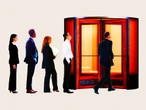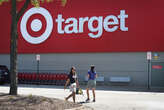Advertisers and consumers have had something of a grand bargain for decades: If we’re willing to put up with ads, we can watch, listen to, or otherwise consume content for free.
But the proliferation of digital advertising with the rise of the internet has long forced consumers to wonder if they’re getting the short end of the stick. And consumers are increasingly taking measures into their own hands to limit their ad exposure.
That’s a main takeaway from a new white paper published on Wednesday by the Berlin-based ad-filtering company Eyeo and the Harris Poll. The white paper compiles online survey responses from more than 2,000 people who own both a smartphone and laptop or desktop computer. It finds growing frustration with the amount and types of ads that people are running into—be it on websites, streaming services, games, or other mediums.
“A lot of our studies and this one show that people do not mind the advertising in exchange for free content,” says Jan Wittek, chief commercial officer at Eyeo. “The overwhelming majority say they’re okay with it. The question is what type of ads and what is the ad experience—nobody likes being bombarded with ads that fill 90% of the screen, or ads that have both video and sound on. Those are most hated, and the ones that advertisers continue to use the most.”
Here are some of the key takeaways from the research:
Tech companies seen as being responsible
According to the white paper, 89% of survey respondents say there should be a limit to the number of ads they need to sit through in exchange for accessing free content, plus limits to how disruptive they can be.
Interestingly, respondents seem to blame tech companies for the pervasiveness of advertisements they’re exposed to more than the advertisers themselves.
When asked “who should be responsible for controlling the number of ads that could be shown,” 58% of respondents pointed to tech companies such as Samsung or Apple, while 49% said brands and advertisers.
At the same time, consumers seem to understand that multiple stakeholders hold roles in the digital advertising space, according to Wittek. “The most important message is that consumers have expectations toward all parties involved to solve this problem,” he says.
We may be nearing a breaking point
While the data demonstrates that consumers are tired of digital ads, they’re clearly still willing to put up with them to a point. But what happens when they no longer are?
Wittek says we may be reaching that point. Additional data from Eyeo finds that ad-blocker usage is seeing an uptick, increasing 11% between Q1 2022 and Q2 2023. “We can really point to the uptick of adblock tools as evidence that people are not willing to put up with it anymore,” he says.
Unfortunately, advertisers have responded to these tools by increasing the number of ads they’re running, and finding new ways to reach people. For consumers, that means dodging digital ads will continue to be a game of whack-a-mole.
“The approach most advertisers are taking is that they’re compensating for loss of attention through more volume,” Wittek says. “There’s an endless supply of advertising inventory to reach you.”







No comments